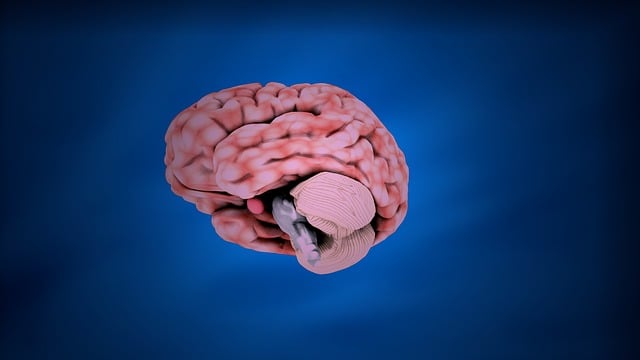Post-Traumatic Stress Disorder (PTSD) in children is managed through therapy focused on Mind Over Matter principles, teaching coping skills and positive thinking exercises. These approaches help kids overcome emotional struggles, rebuild safety, and develop resilience, preparing them to face future challenges with confidence. Tailored positive thinking exercises, including mindfulness, storytelling, and journaling, promote self-awareness, emotional intelligence, and healthier coping mechanisms. Regular, consistent sessions in a safe space, using engaging tools like guided meditations or interactive apps, celebrate small victories while acknowledging individual journeys. Professional guidance is sought for severe cases, ensuring access to trauma support services and Mental Illness Stigma Reduction Efforts.
Post-Traumatic Stress Disorder (PTSD) is a significant concern among children, often stemming from traumatic events. This article explores an innovative therapy approach—positive thinking exercises—as a powerful tool to combat PTSD in young minds. We delve into the science behind positive thinking and its potential to heal. From understanding the disorder to designing tailored exercises and implementing successful strategies, this guide offers valuable insights for therapists and caregivers. Learn how these practices can help children manage trauma and foster resilience through the power of positive thought.
- Understanding Post-Traumatic Stress Disorder in Children
- The Power of Positive Thinking: A Therapeutic Approach
- Designing Effective Positive Thinking Exercises
- Implementing the Exercises: Tips for Success
- Tracking Progress and Celebrating Improvements
Understanding Post-Traumatic Stress Disorder in Children

Post-Traumatic Stress Disorder (PTSD) is a common yet serious condition that can affect children after they experience or witness a traumatic event. Understanding PTSD in young individuals is paramount as it can significantly impact their overall well-being and development. Children may struggle to express their emotions and fears, making it essential for caregivers and therapists to be attuned to subtle changes in behavior.
One effective approach to addressing PTSD in children is through therapy, focusing on Mind Over Matter principles. By teaching coping skills development and promoting positive thinking exercises, therapists can empower kids to manage their emotions and rebuild a sense of safety. These strategies aim to boost confidence and help children develop resilience, enabling them to navigate future challenges with greater ease.
The Power of Positive Thinking: A Therapeutic Approach

The power of positive thinking is a therapeutic approach that has gained significant traction, especially when it comes to assisting children who have experienced post-traumatic stress disorder (PTSD). By focusing on fostering optimistic thoughts and reframing negative experiences, this method offers a unique and effective healing path. Positive thinking exercises can empower kids to develop resilience, enhance their emotional intelligence, and improve their overall well-being.
Through mindfulness meditation techniques, children learn to stay present, cultivate awareness of their thoughts, and redirect negative thought patterns. Communication strategies play a pivotal role here, encouraging them to express their feelings openly and build supportive relationships. By integrating positive thinking into their daily routines, these young individuals can break free from the cycle of trauma, reduce anxiety, and develop healthier coping mechanisms.
Designing Effective Positive Thinking Exercises

Designing effective positive thinking exercises involves tailoring activities that cater to specific emotional needs, especially for children dealing with post-traumatic stress disorder (PTSD). These exercises should promote self-awareness, a crucial component in therapy for children with PTSD. Incorporating creative strategies like storytelling or art can make these sessions engaging and accessible. For instance, encouraging children to draw their feelings allows them to visually express emotions that might be difficult to articulate verbally.
Additionally, positive thinking exercises should include communication strategies that foster open dialogue. These strategies enable children to share their experiences, fears, and hopes, fostering a safe environment where emotional healing processes can begin. By integrating Self-Awareness Exercises into the routine, children learn to recognize and manage their emotions effectively, which is essential for building resilience and positive thinking patterns.
Implementing the Exercises: Tips for Success

Implementing positive thinking exercises can be a transformative process for children struggling with post-traumatic stress disorder (PTSD). These practices are not merely a passing trend but powerful tools that, when integrated into daily routines, offer lasting benefits. Start by incorporating short, regular sessions tailored to your child’s needs and comfort level. Consistency is key; make it a non-negotiable part of their day, much like brushing teeth or mealtimes. Create a safe and supportive environment where they feel free to express their emotions without judgment.
Consider using engaging activities like journaling prompts, guided meditation recordings, or interactive apps designed for therapy. Make it fun by allowing them to choose topics or themes that resonate with their interests. Encourage open communication; discuss the exercises’ effects and any challenges encountered. Build upon successes, celebrating small victories along the way. Remember, every child’s journey is unique, so be patient, adaptable, and always seek professional guidance for severe cases, ensuring access to trauma support services and mental wellness resources, while also supporting Mental Illness Stigma Reduction Efforts.
Tracking Progress and Celebrating Improvements

Tracking progress is a vital component of any positive thinking exercise implementation, especially for children navigating post-traumatic stress disorder (PTSD). Regularly monitoring their emotional well-being and cognitive progress allows therapists to adjust therapy plans accordingly. This can involve setting achievable goals related to managing stress, improving communication strategies, and fostering healthier thought patterns. By doing so, the child’s journey towards recovery becomes more tailored and effective.
Celebrating improvements is another powerful aspect of this process. Recognizing and acknowledging their achievements, no matter how small, boosts their confidence and reinforces positive thinking. Trauma support services often incorporate stress reduction methods that encourage children to express their feelings and track their progress visually. This can include journaling, drawing, or using interactive apps designed to enhance communication strategies and provide trauma-focused care. Such practices not only aid in healing but also empower children to take ownership of their emotional well-being.
Positive thinking exercises offer a promising therapeutic approach to support children affected by post-traumatic stress disorder (PTSD). By incorporating these evidence-based practices, parents and caregivers can empower kids to develop resilience and coping mechanisms. Through consistent implementation, tracking progress, and celebrating improvements, the benefits of positive thinking therapy can be enhanced, providing a path towards healing and improved mental well-being for children facing PTSD.












